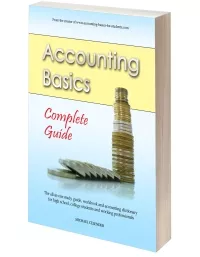Cost Price, Sales Price, Mark-Up
Q: How do you find the cost price if the sales are $216,000 and the mark-up is 50%?
A: "Mark-up" literally means the amount you "mark up" the cost by. This means the amount you increase the cost by to get to the selling price, and is expressed as a percentage of the cost.
 "Mark-up" is basically another way of saying the profit - the difference between the sales price and the cost - but specifically referring to the cost as the starting point or basis of the calculation.
"Mark-up" is basically another way of saying the profit - the difference between the sales price and the cost - but specifically referring to the cost as the starting point or basis of the calculation.In this example the profit (mark-up) is 50% of the cost price. For the purpose of our calculation, the cost will amount to 100% since it is our starting point or basis.
If we put all this into an equation this simplifies to:
Mark-up / Cost = 50/100
Now let's substitute that first equation above into a general equation for sales, cost and mark-up:
Selling price = Cost + Mark-up (profit)
Selling price = 100% + 50%
Selling price = 150%
In other words, the selling price is 150% of the cost (100%).
Therefore:
Cost = 100/150 X Selling price
= 100/150 x $216,000
= $144,000
Hope that question and solution helps you better understand the differences between cost price, sales price and mark-up.
Check out the comments below for more questions on sales, cost price and mark-up with accompanying solutions.
Best,
Michael Celender
Founder of Accounting Basics for Students
Related tutorials:
- What is Inventory?
- Sales, Cost of Goods Sold and Gross Profit
- Perpetual and Periodic Inventory Systems
- FIFO, LIFO and the Weighted Average Cost Method
For more free questions check out our page of Full Accounting Questions and Answers
Comments for Cost Price, Sales Price, Mark-Up
|
||
|
||
|
||
|
||
|
||
|
||
|
||
|
||
|
||
|
||
|
||
|
||
|
||
|
||
|
||
|
||
© Copyright 2009-2023 Michael Celender. All Rights Reserved.
Click here for Privacy Policy.




